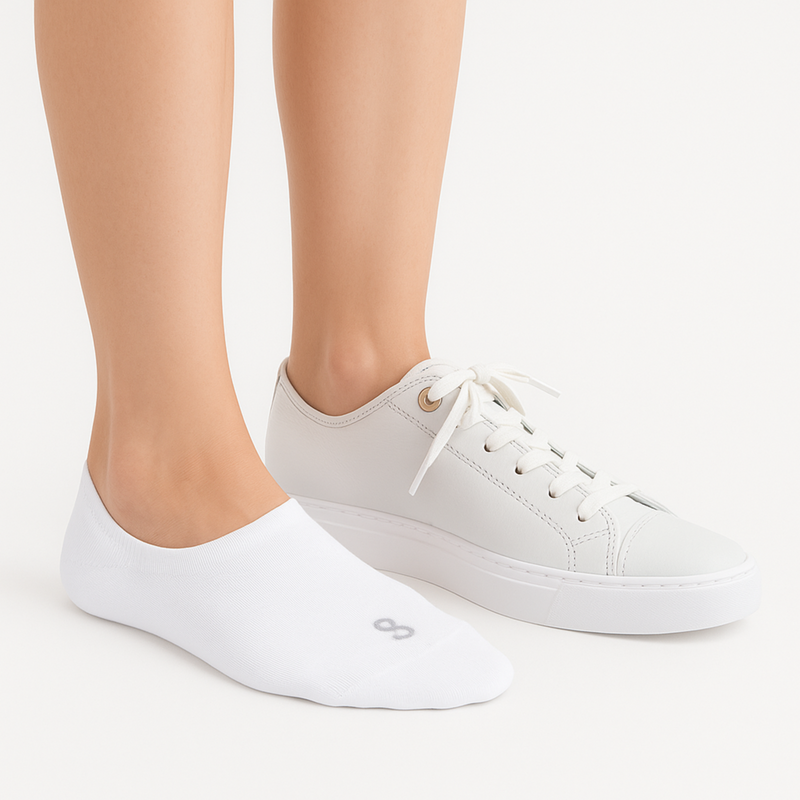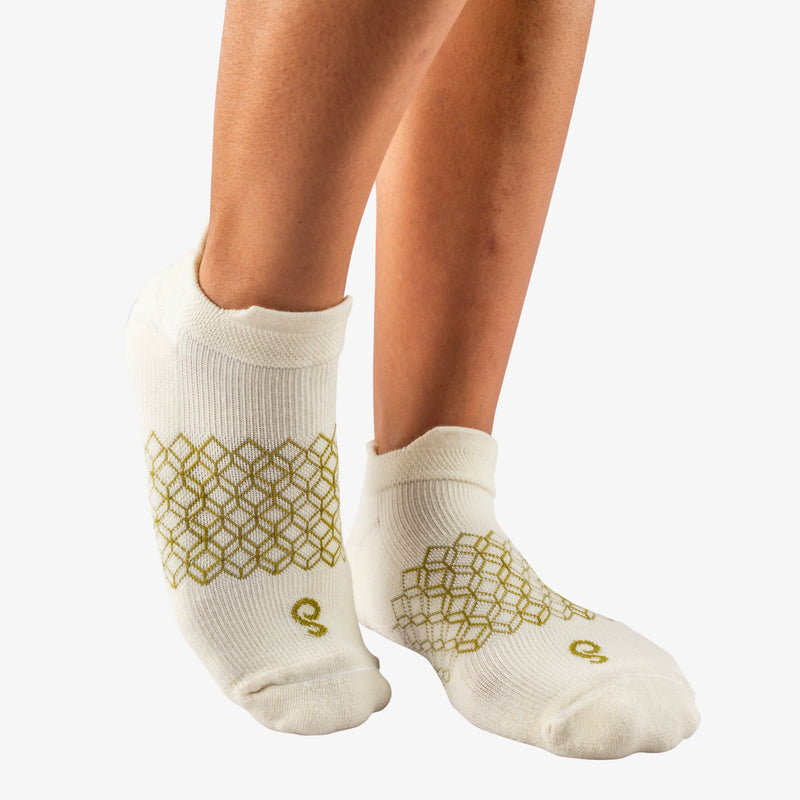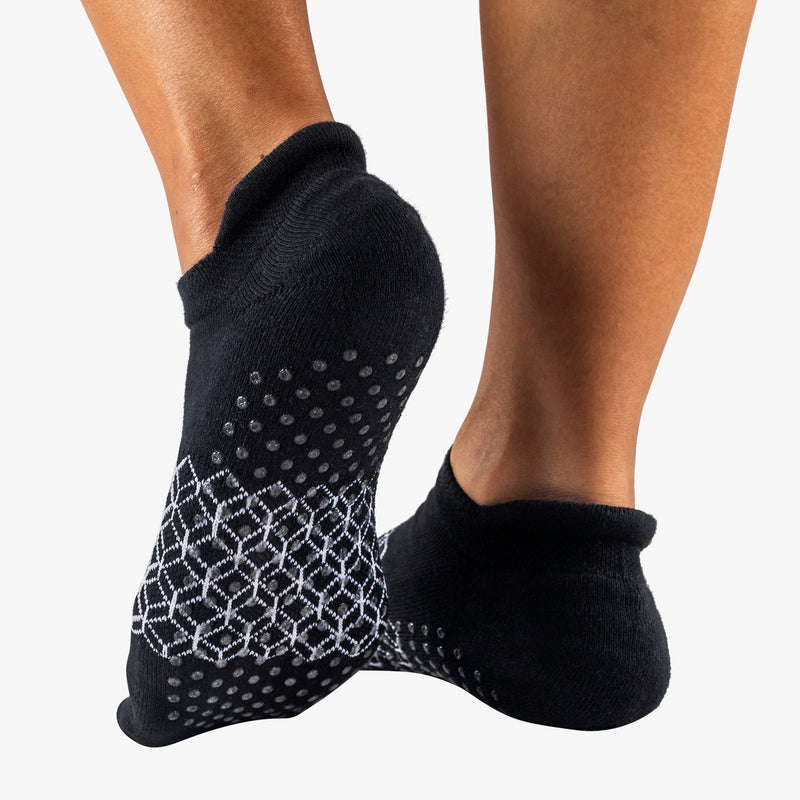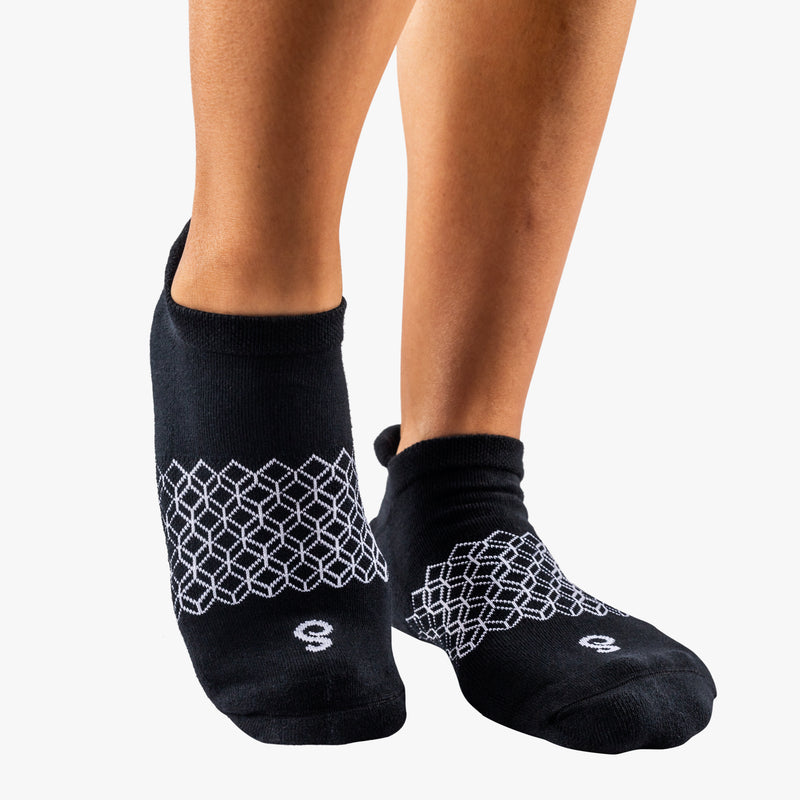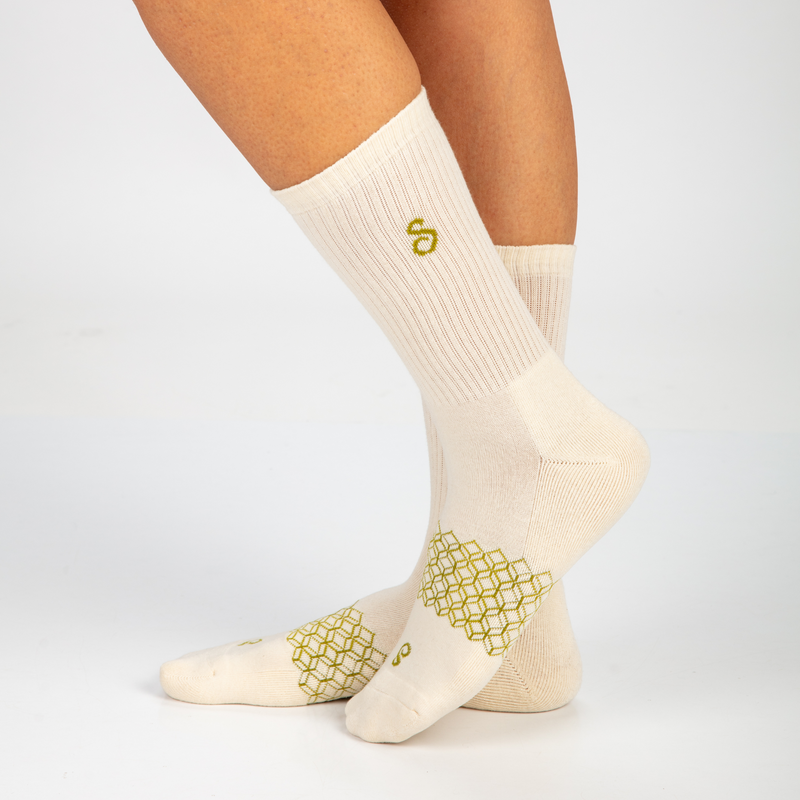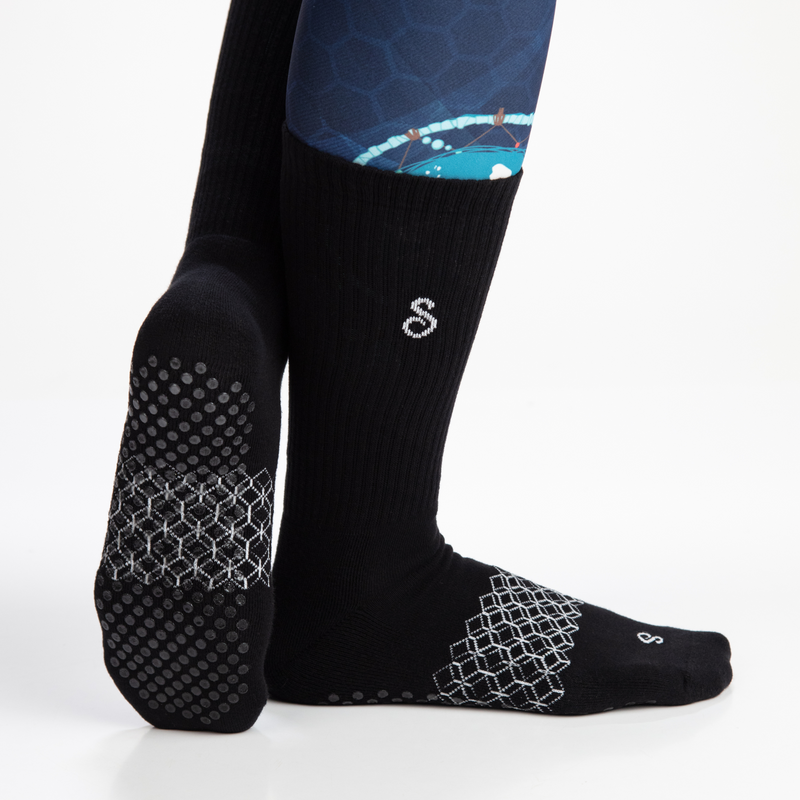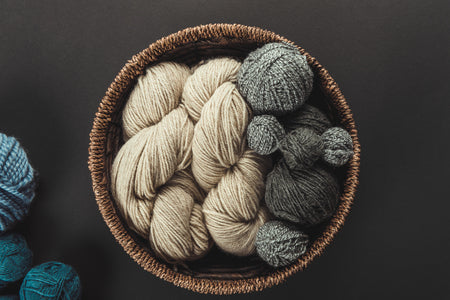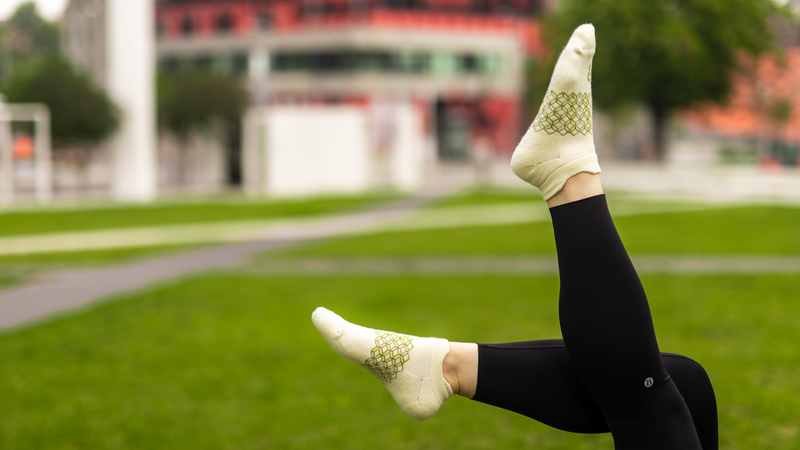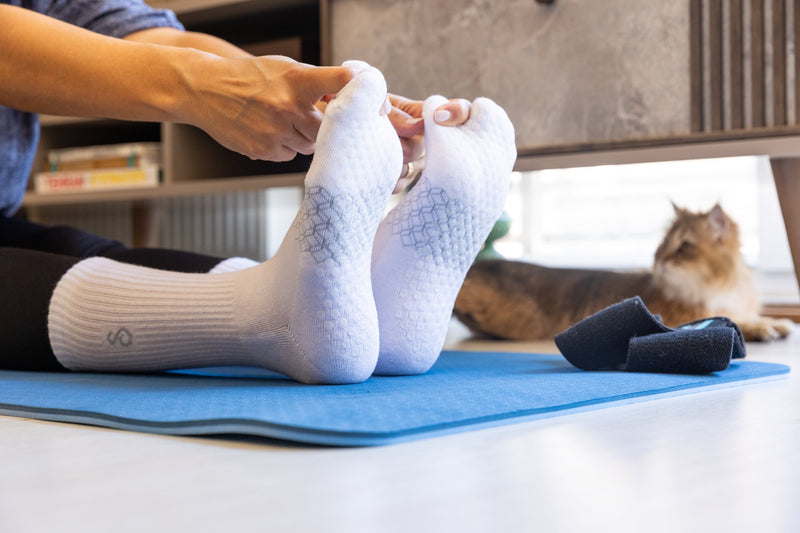
[first-world problem alert] For those of you who like the look of no-show socks, one of the major downsides is their tendency to slip down, bunch up under your feet, and cause discomfort. We’ve all been there. So how do you select no-show socks that have a fighting chance of staying up while you go about your daily business?
One of the most annoying things about no-show socks is when then fail to stay up. Many designs slip off your heel too easily, bunch up under your foot, and cause discomfort, forcing you to stop and re-adjust. Or worse, if you can’t stop to re-adjust, they expose you to a greater risk of blisters.
Here are a couple of typical complaints gleaned from online shoppers:
“They do not stay put for anything. the elastic is too loose, and the gel at the back of the heel (which starts to disappear with the first wash) did absolutely nothing to keep them in place. I kept having to stop walking down the sidewalk to fix them because they were bunched around my toes...”
“When I first got these socks, I loved the cut and colour so much that I bought another set. Now after wearing them for a month, almost all are in the trash because the material wears out so fast. I would not recommend buying this product unless you only want to wear socks only a handful of times.”
Sound familiar?
We’re here to shed some light on the design features of no-show socks that don’t easily slip down and are designed for durability, and what you should look for when buying them.
tip #1: look for a no-show sock style with ample foot coverage
There are two basic styles of no-show socks: those that are designed to cover just the toes and heels (low cut), and those that contour around more of the foot (mid or high cut). The former are more properly considered as shoe liners rather than proper socks. Here’s an illustration of the difference:


The first example illustrates a mid-cut no-show, whilst the second one illustrates a low-cut.
With a mid-cut or high-cut no-show, the larger coverage around the foot serves to anchor the socks better. If you’re concerned about the socks slipping down, these are one of the important features you should look for. If you’re wearing loafers or trainers, a mid-cut style of no-shows should truly be no-show.

But if you're wearing ballet flats or pumps, the top and the heel of a high-cut or mid-cut no-show is likely to partially show, and you’ll have to choose between comfort and style.
One compromise could be to choose a colour of no-show sock that won’t make the sock stand out too much. You could seek our a no-show sock made of undyed organic combed cotton, which is naturally an ivory colour. Or else, match the sock colour to your shoe colour.
But for the ultimate no-show with the most restrictive toe coverage, the only option is low-cut sock liners. The best ones tend to be made of thin nylon material, like tights, but with a gel liner around the entire opening.
Choosing the proper amount of toe coverage is a good start, but it’s not quite enough to keep your no-shows from slipping down.
tip #2: choose a no-show sock design with effective heel grips
Another essential element is an internal heel grip. These are areas or strips of tacky PVC or silicone that are attached to the inside of the sock and help them adhere to your heel. Here are a couple of examples:
The design of the grippers makes a difference here. The more generous application of the gripping material that you see in the second image is more effective and is a sign of a high-quality sock, as the gripping material is an added cost.
In terms of materials, the grippers are generally either PVC or silicone.
PVC (Polyvinyl Chloride ) is one of the most widely used plastics in the world. The material is derived from oil and chlorine, and poisonous dioxin gas is one of the byproducts of its manufacturing process. To make it flexible, phthalate chemicals are added, which are linked to certain cancers and human organ damage. PVC doesn’t biodegrade or degrade, but it is recyclable (although less than 1% of it winds up being recycled). If disposed of via incineration, additional dioxin gases are released into the environment.
On the other hand, silicone is a mix of synthetic rubbers and synthetic plastic polymers. What differentiates silicone from PVC is that its base material is silica, a natural substance, which is then combined with carbon at high heat to produce silicon. It’s then further refined by combining it with fossil fuel-derived hydrocarbons, in a process similar to PVC, to form the final silicone resin. It’s also similar for its persistence in the environment and lack of recyclability, and suspected health hazards.
In terms of performance, silicone is the superior material due to its comparative softness and longer service life. PVC is cheaper and somewhat less eco-friendly than silicone, but neither are environmental superstars. It’s a choice between the lesser of two evils. we're not here to judge, just to inform :)
tip #3: opt for no-show socks featuring natural yarns
Natural yarns such as cotton and merino wool breathe and have inherent moisture-wicking properties. They just feel good against your skin.
Cotton comes in a variety of grades and you should keep an eye out for “combed” cotton, which has literally undergone a combing process to remove shorter cotton fibres and other impurities. The result is a super-soft feel. Egyptian cotton and pima cotton are attempts to brand extra-long cotton varieties, which in the end have a similar feel to combed cotton.
Merino wool is also a great material for socks and comes in different grades, which relate to the thickness of the fibre. They range from strong (< 24 microns) to ultra fine (< 17.5 microns). Merino wool is harvested from the merino variety of sheep, typically twice a year, and is a sustainable material. Most merino sheep live in Australia and New Zealand.
tip #4: choose no-show socks with a seamless toe and high thread count
This tip is not unique to no-show socks, but because they are thin and typically worn with ballet flats or pumps, the importance of a comfortable toe seam is accentuated.
Socks that are billed as “seamless toe” are really made with more attention to the thickness of the standard toe seam. Because socks are knitted in machines that produce tube-like forms, they must be closed at one end by a secondary process. Sometimes seamless-toe socks are finished by the same machine, sometimes with a separate machine (with human assistance to position the machine accurately), and other times they are finished entirely by humans.
Thread count is also an important factor for a no-show sock’s quality. Most mass-market sock retailers don’t disclose the needle count of their socks in their product descriptions, and very rarely would this be on the label itself. A high needle count means a denser (not thicker) weave and results in a thinner and more durable sock.
What is considered a high needle count? Most standard socks are 96N-128N (N = needles per square inch). A needle count of 168N and above would be considered high. Needle count alone is not a determining factor in the sock’s quality. For example, it’s less important for thicker socks designed for casual wear. However, it does have an impact on the longevity of the sock, as the yarn is knitted more densely.
Here's an example of the difference:

tip #5: select the proper no-show sock size
Finally, keep in mind that no two feet are exactly the same (even on the same person) yet no-show socks typically come in a single size. In the UK and Europe, the standard size is 23-25cm, which should fit 80% of adults. More advanced brands will offer a wider range of sock sizes, such as this:

If you have extra large or extra small feet, you may have to look abroad, to Asia, for a small size, or to children's socks. And perhaps to America for extra large sizes.
bonus tip: be careful when washing and drying your no-show socks
Here’s another complaint from an online customer about her no-show sock purchase:
"They were OK at first but once you start washing them they either shrink or lose their sticky power, constantly having to adjust because they come off every other step."
or this:
"Unfortunately, what was perfect pre-wash is no more… I'm tortured through the day, both by the constant need to pull the heel of the sock back over my heel and with the grief having thought I found what i had been searching for only to be bamboozled. Sad."
Our final tip is not about the features of the sock but rather how to care for them. The suppleness and stickiness/tackiness (and thus gripping power) of the PVC or silicone heel grippers will be affected by your washing-drying cycle, so be sure to hand wash these socks in cold water, and then line dry them. That will help to keep their size and gripping power effective for longer. Treat them like lingerie.
If you insist on using a washing machine, make sure to use the gentle cycle and cold water, and keep the grippers on the inside of the sock to avoid unnecessary friction with other items in your load.
where to buy the best no-show socks online?
Well it just so happens that hipSwan’s "chill" no-show socks are some of the best no-show socks in the business (don't take our word for it, read the comments from our customers).
learn more about hipSwan's chill no-shows 👉





